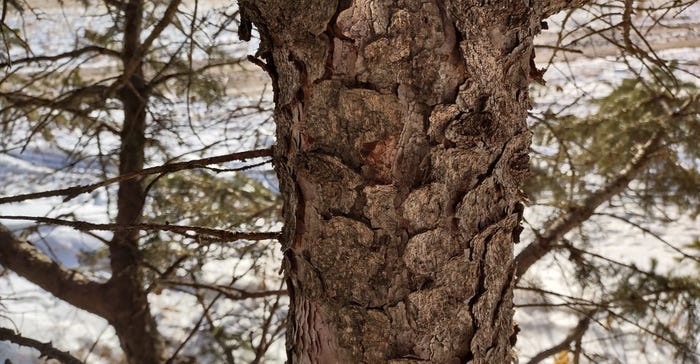
Just as you can identify cattle breeds by hide color and characteristics, the same is true with trees. In the winter, when broadleaf trees are barren of leaves, it is even easier to distinguish between different species by the type of bark on the trunk.
While bark serves an important purpose in the life of the tree, providing a form of protection from the outside world, it continually renews from within. It helps keep out moisture in the rain and prevents the tree from losing moisture when the air is dry. It also insulates against the cold and heat, and wards off insect pests.
Trees often start their lives with smooth bark, but as time goes by and the tree ages, its bark often develops deep ridges, wrinkles and furrows.
Many trees have interesting bark types that add uniqueness to the winter landscape around the farm. Ranging from the smooth bark of aspen trees to the deeply ridged bark on eastern cottonwood, each tree has a unique texture, color and type when it comes to the bark covering.
Click through our sample gallery of trees to view their distinct bark characteristics. Learn more at hortnews.extension.iastate.edu.
About the Author(s)
You May Also Like






